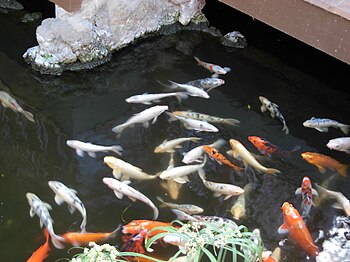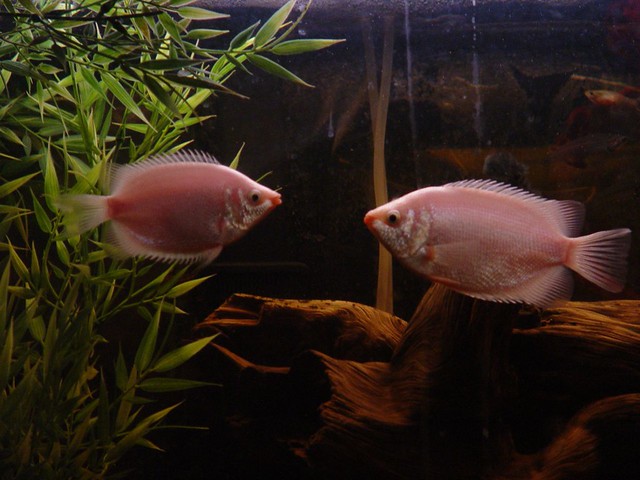 |
| Chromis cyanea (Photo credit: Wikipedia) |
These are a small oval-bodied fish with a characteristically long, v-shaped forked tail. Their bodies are a solid, brilliant blue with the exception of markings along the outer edges to their dorsal fins. The shade of these markings will vary from pale to dark depending on the fish's mood. Both sexes and juveniles possess this same color palette. The family of fish the blue chromis belongs to have an average life expectancy of 12-15 years.
Chromis are a hardy, very active fish making them an excellent choice for the novice saltwater aquarist. They are often used as tester fish by aquarists cycling a new tank for the first time. They test water quality the same way canaries were used to test air quality in subterranean mining operations around the turn of the century. Their survival and continued vigor indicates that more exotic and expensive species can now be added to the newly established eco-system.
This species is labeled "reef safe" and can be mixed with other inhabitants typical of tropical marine reefs. They are considered non-aggressive toward other species. Same species quarrels are an entirely different matter. The general consensus is that they can be added to an aquarium in one of two ways. You can keep a single member of the species. Or your aquarium can become home to a community of no less than six. The shoaling instinct seems to prevail in larger groups. In smaller groups, these fish have been known to pick on the weakest member of the group until it is dead. This pattern continues until there is but a single survivor. If kept in a school a minimum tank size of 30 gallons will give them plenty of swimming room. These are surface dwelling fish in aquariums.
Chromis are diurnal omnivorous. In nature, they emerge from their shelter at sunrise and rise up toward the surface to feed on plankton. Spawning also occurs during daylight hours. At dusk, the fish will seek out shelter for the evening. Feeding them a variety of foods will help them maintain their color and spontaneity. They will eat frozen or dried food formulated for omnivores. They will also dine on any of the protein sources commonly fed to marine life. They sometimes eat algae in an aquarium.
Information on sexing this species is not readily available other than generalized statements declaring that it is not easy. They have, however, been known to breed in captivity. Maintaining a school fed a diet consisting of live foods will help to induce the spawning cycle. The male will construct a nest in the sand prior to spawning. He will then mate with several females. Eggs will be gathered into the nest where the male will stand guard over them until they hatch.
|
The hottest new trend in saltwater aquarium ownership is pet jellyfish. Jellyfish can't be kept in a traditional saltwater tank setup. They need a specially designed Jellyfish Aquarium Fish Tank to remain alive and healthy. Jellyfish tanks don't require the constant upkeep normally associated with saltwater aquariums. Moon Jellies are the most popular jellyfish for home aquariums because of their exotic beauty and ease of care. Find out more about Moon Jellyfish and other Pet Jellies. Jellyfish are among the most interesting creatures in the aquatic kingdom.
Article Source: EzineArticles
|








